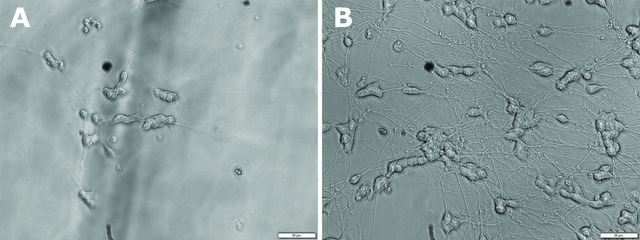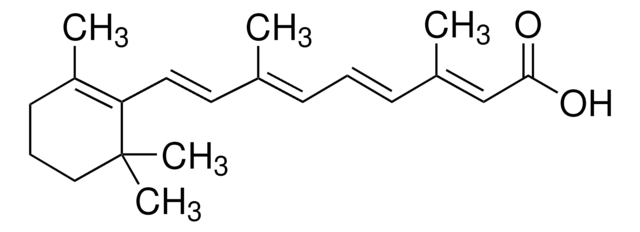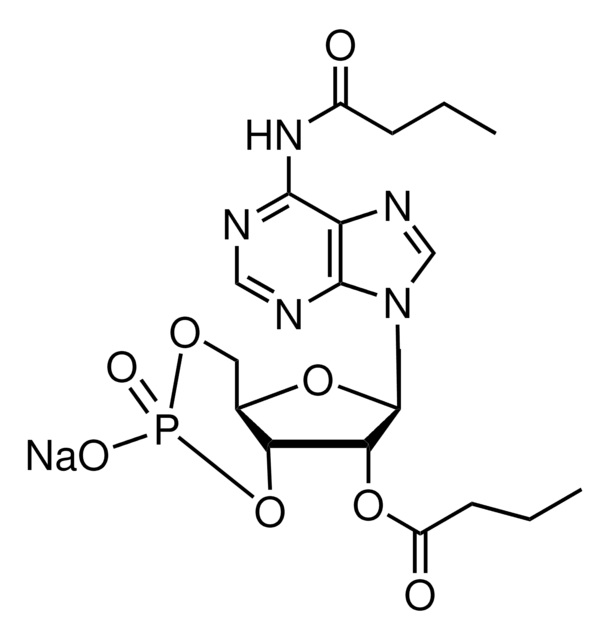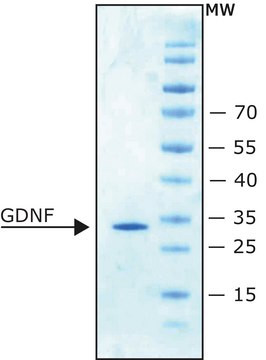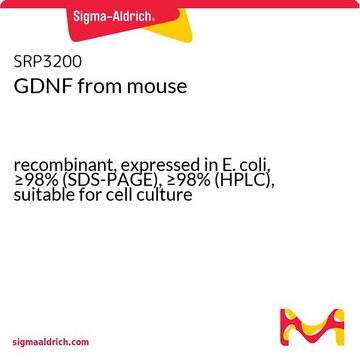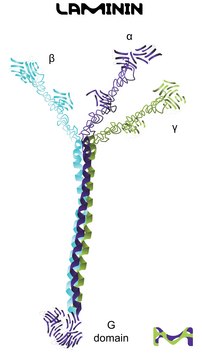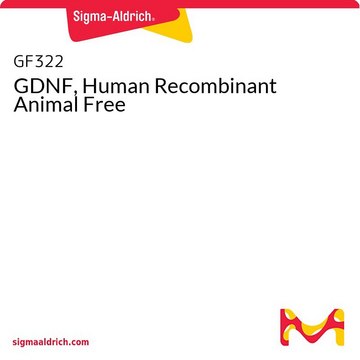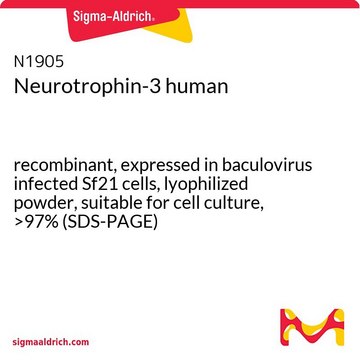SRP3014
BDNF human
Carrier free, recombinant, expressed in E. coli, ≥95% (SDS-PAGE), suitable for cell culture
Synonyme(s) :
Brain Derived Neurotrophic Factor
Se connecterpour consulter vos tarifs contractuels et ceux de votre entreprise/organisme
About This Item
Code UNSPSC :
12352202
Nomenclature NACRES :
NA.32
Produits recommandés
Source biologique
human
Niveau de qualité
Produit recombinant
expressed in E. coli
Essai
≥95% (SDS-PAGE)
Forme
lyophilized
Poids mol.
27.0 kDa
Conditionnement
pkg of 10 μg
Technique(s)
cell culture | mammalian: suitable
Impuretés
≤1.00 EU/μg endotoxin, tested
Numéro d'accès UniProt
Conditions d'expédition
wet ice
Température de stockage
−20°C
Informations sur le gène
human ... BDNF(627)
Description générale
The gene BDNF (brain derived neurotrophic factor) is mapped to human chromosome 11p14.1. BDNF is a member of the neurotrophin family of growth factors. The gene encodes a precursor protein, proBDNF. Mature BDNF (mBDNF) is synthesized by post-translational cleavage of proBDNF. Both proBDNF and mBDNF play crucial roles in cellular signaling. BDNF is expressed as the C-terminal portion of a 247 amino acid polypeptide precursor, which also contains a signal sequence of 18 amino acid residue and a propeptide of 110 amino acid residues. Recombinant human BDNF is a 27.0kDa homodimer of two 119 amino acid subunits linked by strong noncovalent interactions.
Actions biochimiques/physiologiques
Like other members of this family, BDNF (brain derived neurotrophic factor) supports neuron proliferation and survival. BDNF can bind to a low affinity cell surface receptor called LNGFR (low-affinity nerve growth factor receptor), which also binds other neurotrophins such as NGF (nerve growth factor), NT-3 (neurotrophin-3) and NT-4. However, BDNF mediates its neurotrophic properties by signaling through a high affinity cell surface receptor called gp145/trkB (tropomyosin-related kinase B). BDNF also plays an important role in vascular function and participates in angiogenesis. It is involved in the pathogenesis of Alzheimer′s disease. ProBDNF interacts with p75 neurotrophin receptor, leading to long-term depression in the hippocampus.
Séquence
MHSDPARRGE LSVCDSISEW VTAADKKTAV DMSGGTVTVL EKVPVSKGQL KQYFYETKCN PMGYTKEGCR GIDKRHWNSQ CRTTQSYVRA LTMDSKKRIG WRFIRIDTSC VCTLTIKRGR
Forme physique
Lyophilized with no additives.
Reconstitution
Centrifuge the vial prior to opening. Reconstitute in water to a concentration of 0.1-1.0 mg/ml. Do not vortex. This solution can be stored at 2-8°C for up to 1 week. For extended storage, it is recommended to further dilute in a buffer containing a stabilizer (example 5% Trehalose) and store in working aliquots at -20°C to -80°C.
Remarque sur l'analyse
The biological activity is determined by its ability to stimulate the proliferation of human neuroblastoma cells, SH-SY5Y.
Code de la classe de stockage
11 - Combustible Solids
Classe de danger pour l'eau (WGK)
WGK 3
Point d'éclair (°F)
Not applicable
Point d'éclair (°C)
Not applicable
Faites votre choix parmi les versions les plus récentes :
Déjà en possession de ce produit ?
Retrouvez la documentation relative aux produits que vous avez récemment achetés dans la Bibliothèque de documents.
Les clients ont également consulté
Notre équipe de scientifiques dispose d'une expérience dans tous les secteurs de la recherche, notamment en sciences de la vie, science des matériaux, synthèse chimique, chromatographie, analyse et dans de nombreux autres domaines..
Contacter notre Service technique